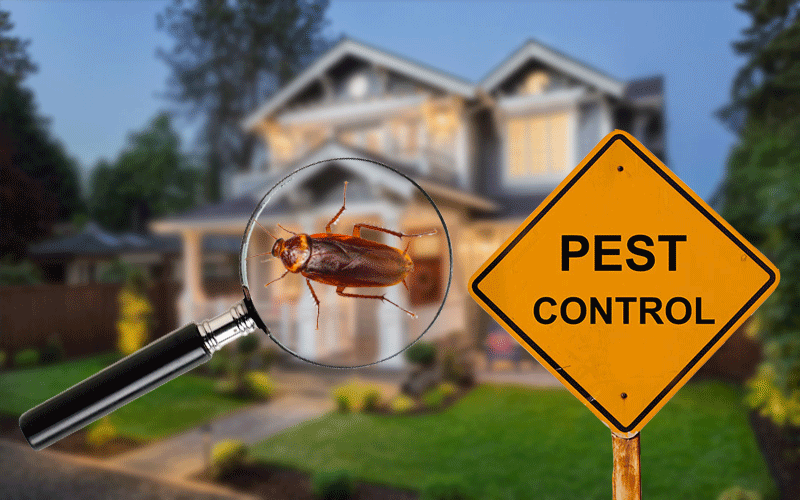Professional A1 Charlotte Bed Bug Exterminator - Top Quality Service Guaranteed
Wiki Article
Bed Pest Treatment Break Down: Comparing Chemical Vs. Non-Chemical Solutions
In the realm of pest control, especially when handling the consistent problem of bed bugs, the option between chemical and non-chemical treatment solutions can be a crucial one. Both techniques provide distinctive advantages and drawbacks, affecting variables such as performance, safety and security factors to consider, and general expense. By taking a look at the nuanced information of each technique, a clearer understanding of which path to seek in attending to a bed bug invasion can be achieved.Performance of Chemical Treatments
Chemical therapies for bed pest problems have actually been widely recognized for their rapid and powerful effectiveness in getting rid of these parasites. When considering the efficiency of chemical treatments, it is essential to recognize that they can give a detailed and fast remedy to a bed insect issue.Moreover, chemical treatments have the advantage of offering recurring results, suggesting that they can remain to eliminate bed bugs even after the initial application. This recurring action is especially helpful in combating any type of possible re-infestations. Additionally, the fast activity of chemical treatments can bring alleviation to people dealing with severe bed insect problems, allowing them to restore control of their living areas swiftly.
Safety And Security Issues With Chemical Solutions
One crucial aspect that requires careful consideration when utilizing chemical options for bed pest treatment is making certain the security of owners and the setting. Exposure to specific chemicals made use of in bed pest treatments can lead to respiratory problems, skin irritability, or various other unfavorable responses, specifically in individuals with pre-existing conditions or level of sensitivities.Additionally, the ecological impact of chemical remedies is an additional substantial factor to consider. Some pesticides used in bed pest treatments may be harmful to valuable pests, wildlife, and communities if they leach right into the soil or water systems. It is vital to use chemical therapies carefully, complying with safety guidelines, and thinking about much less toxic alternatives to minimize these dangers and make certain the secure and reliable administration of bed bug invasions.
Advantages of Non-Chemical Methods
Taking into consideration the potential security problems and ecological impact related to chemical options for bed bug treatment, exploring non-chemical techniques provides an encouraging option with several distinctive advantages. Non-chemical methods supply a safer choice for families, specifically those with children, family pets, or people conscious extreme chemicals. These strategies eliminate the dangers of exposure to harmful substances, reducing the capacity for adverse health effects. Additionally, non-chemical therapies are eco-friendly, as they do not add to air or water pollution, making them a sustainable option for pest control.In addition, non-chemical solutions can be reliable in targeting bed bugs, including hard-to-reach locations where chemical therapies may not permeate - A1 bed bug exterminator charlotte. Approaches such as warm treatment, vacuuming, vapor cleansing, and bed mattress coverings offer thorough obliteration without the use of unsafe chemicals.
Limitations of Non-Chemical Treatments

Additionally, non-chemical therapies usually require multiple applications to attain successful eradication. This can be taxing and might not always assure total elimination of all bed bugs and their eggs, specifically in hard-to-reach or covert locations.
Additionally, the success of non-chemical therapies heavily relies upon proper implementation and thoroughness, which can be testing for people without specialist knowledge. Insufficient application of non-chemical techniques might lead to incomplete obliteration, leading to persistent infestations and the requirement for added therapies.
Therefore, while non-chemical treatments have their advantages, it is necessary to recognize these limitations and consider them when figuring out one of the most reliable technique for handling bed bug invasions.
Cost Contrast: Chemical Vs. Non-Chemical Options
Offered the constraints related to non-chemical treatments, a vital element to assess in the context of bed pest administration is the expense comparison between chemical and non-chemical alternatives. Chemical treatments usually involve the application of pesticides by professionals, which can vary from $250 to $900 per space, depending on the severity of the invasion and the dimension of the location to be treated. On the other hand, non-chemical treatments like warmth treatment or vapor can be much more costly, with expenses varying from $1,000 to $6,000 for a whole home. While the first price of chemical therapies might seem reduced, multiple therapies may be needed to completely remove the invasion, possibly boosting the general expense. On the various other hand, non-chemical alternatives may offer a much more green and sustainable option, although they can be cost-prohibitive for some individuals. Eventually, when thinking about the cost of bed bug therapy options, it is essential to evaluate the in advance expenses versus the performance and long-lasting sustainability of the selected approach.Verdict

Thinking about the prospective safety issues and environmental impact associated with chemical options for bed pest therapy, exploring non-chemical methods provides an appealing option with several unique advantages.Provided the limitations associated with non-chemical treatments, an essential facet to evaluate in the context of bed pest administration is the price contrast in between chemical and non-chemical options. In contrast, non-chemical treatments like warm treatment or steam can be a lot more pricey, with prices varying from $1,000 to $6,000 for a whole home. While the first expense of chemical treatments might seem lower, multiple therapies may be needed to fully eliminate the invasion, possibly boosting the overall cost.In conclusion, when comparing chemical and non-chemical bed insect therapy choices, it is necessary to take into consideration performance, safety and security, advantages, constraints, and expense.
Report this wiki page